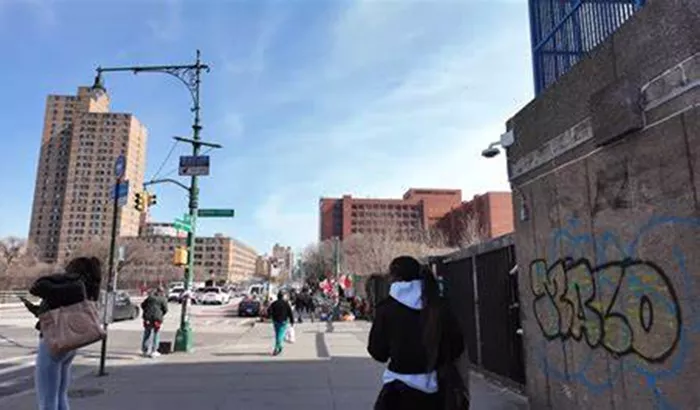The Bronx, one of New York City’s five boroughs, has long carried a reputation for being a dangerous place. Images of crime – ridden streets, abandoned buildings, and high – tension neighborhoods have persisted in popular culture and public perception. But is this reputation entirely accurate, and what factors have contributed to it? As a traveler who has spent time exploring different parts of the Bronx, I aim to dig deeper into the reasons behind this perception and the realities on the ground.
Historical Socio – economic Factors
Poverty and Disinvestment
One of the root causes of the safety concerns in the Bronx is its history of poverty and disinvestment. In the mid – 20th century, the Bronx underwent significant economic decline. As manufacturing jobs left the area, many residents found themselves without stable employment. Factories closed down, and with them went the economic lifeblood of the community. This led to high unemployment rates, which in turn contributed to widespread poverty.
Without sufficient economic opportunities, families struggled to make ends meet. Children grew up in households where basic needs were often a challenge to fulfill. Lack of resources meant limited access to quality education, healthcare, and proper housing. These circumstances create an environment where crime can thrive as some individuals may turn to illegal activities out of desperation to survive or improve their situation.
Housing Crisis
The Bronx also faced a severe housing crisis during this period. Many landlords, facing financial difficulties themselves, neglected their properties. Buildings fell into disrepair, and slums began to form. As conditions worsened, more and more people were forced to live in overcrowded and unsafe housing. Some landlords even abandoned buildings, leaving them to be taken over by squatters or used for illegal activities.
This housing situation not only affected the quality of life for residents but also had a negative impact on the overall safety of the area. Abandoned buildings became breeding grounds for criminal behavior, such as drug dealing and prostitution. They also presented physical hazards, with collapsing structures and exposed wiring. The lack of stable and decent housing made it difficult for families to build a sense of community and security.
Gang Activity and Crime Networks
Formation of Gangs
Gang activity has been a significant issue in the Bronx for decades. In the face of limited economic opportunities and social instability, many young people were drawn to gangs as a form of community and protection. Gangs provided a sense of belonging that was often lacking in their lives. They offered a support system, albeit one based on illegal activities.
Gangs in the Bronx have been involved in a wide range of criminal activities, including drug trafficking, weapons smuggling, and violent crimes. Territorial disputes between rival gangs led to frequent conflicts, often resulting in shootings and stabbings. These violent incidents not only put the gang members at risk but also endangered innocent bystanders, further contributing to the perception of the Bronx as a dangerous place.
Drug Trade Influence
The drug trade has played a major role in fueling crime in the Bronx. With its large population and proximity to major transportation routes, the borough became a prime location for drug distribution. Drug dealers set up operations in neighborhoods, often targeting vulnerable individuals. The availability of drugs led to an increase in drug – related crimes, such as thefts committed by addicts to support their habits and violence between rival dealers vying for control of the market.
The drug trade also corrupted some elements within the community. Some individuals, lured by the promise of quick money, became involved in the illegal business, further entrenching the cycle of crime and violence. Law enforcement faced significant challenges in combating the drug trade due to its complex and underground nature.
Policing and Community Relations
Policing Challenges
Policing in the Bronx has been fraught with challenges. The high crime rates meant that law enforcement agencies were stretched thin. Officers had to respond to a large number of incidents, leaving less time for proactive policing and community engagement. In some cases, heavy – handed policing tactics were used, which led to increased tensions between the police and the community.
For example, aggressive stop – and – frisk policies, which were widely implemented in the past, disproportionately affected minority communities in the Bronx. These policies led to a sense of mistrust and resentment among residents, who felt that they were being targeted unfairly. This breakdown in trust made it more difficult for the police to gather information from the community and work together to address crime effectively.
Community Disengagement
The strained relationship between the police and the community also led to a lack of cooperation. Many residents were hesitant to report crimes or provide information to the police out of fear of retaliation or mistreatment. This lack of community engagement made it harder for law enforcement to solve crimes and prevent future ones.
Without a strong partnership between the police and the community, it became easier for criminal elements to operate. The community’s ability to self – police and take an active role in maintaining safety was severely hampered. This cycle of disengagement and crime continued, further contributing to the perception of the Bronx as a dangerous area.
Conclusion: Beyond the Stereotype
While the Bronx has faced significant challenges that have contributed to its reputation for being dangerous, it’s important to look beyond the stereotypes. Historical socio – economic factors, gang activity, and policing issues have all played a role in shaping the past. However, the borough is now on a path of change, with community – driven initiatives and policing reforms working to create a safer and more vibrant environment. The Bronx is a diverse and resilient place, with many beautiful neighborhoods, rich cultural heritage, and a strong sense of community. As these positive changes continue, the perception of the Bronx as a dangerous place will hopefully give way to a more accurate understanding of its potential and progress.

